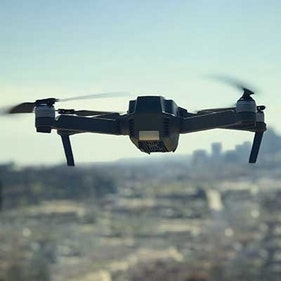Everywhere, solutions that were once the stuff of science fiction are being tested and readied for commercial expansion – whether it’s a hyperloop project in France, flying taxis in Dubai, drone deliveries in Australia, unmanned cargo ships launched by Norway and China, or self-driving trucks on the road in the southwestern United States.
For businesses, the stakes are huge: By 2030, less than 12 years from now, the size of the autonomous vehicle market – including ground, air, and sea transport – could swell to close to €640 billion from €15 billion today, while electric-vehicle ownership is expected to balloon to more than 125 million vehicles from just over three million at the end of 2017. The drone fleet is also proliferating: In the United States alone, the Federal Aviation Administration anticipates the commercial fleet will reach 450,000 by 2022 and could exceed 700,000 with certain regulatory changes.
Everywhere, solutions that were once the stuff of science fiction are being tested and readied for commercial expansion
While there are exciting technological advances on the horizon, more progress needs to be made shrinking and amplifying batteries that enable electrification of vehicles. Both Boeing and Airbus have tested electric aircraft, but the goal of a totally electric regional jet that can carry 100 has not yet been achieved. Electric cars have been developed that can travel more than 300 miles without recharging. Yet, we haven’t worked out how cities will provide the electricity necessary to power the growing army of electric cars, trucks, and buses.
Solutions for overcoming these hurdles are vital, not just to enable transportation expansion, but also to reduce greenhouse gases that are overheating the planet. The arrival of autonomous vehicles also will necessitate substantial changes to the road system, traffic management, and insurance coverage. New regulations and air traffic control are needed to handle the use of larger drones in populated areas.
Aware of what’s possible thanks to artificial intelligence, digitized data, and enhanced connectivity, consumers are also driving change. As in so many industries, service on demand is quickly becoming the norm in transportation. Travelers want to see real-time updates on their trip door-to-door; they want transparency in pricing and reliable Wi-Fi while traveling. And they’re even willing to pay more for these conveniences, according to our global surveys.









